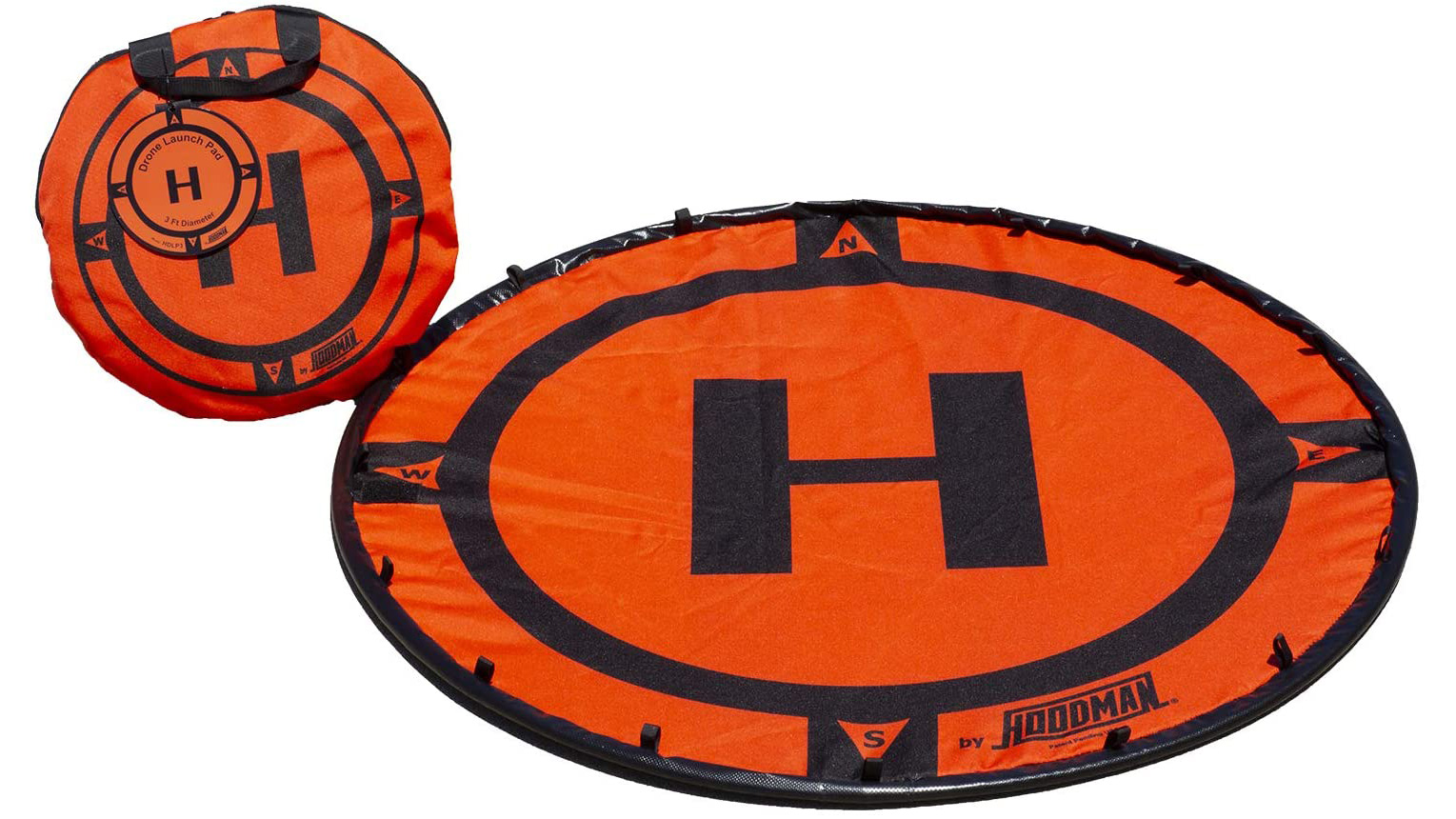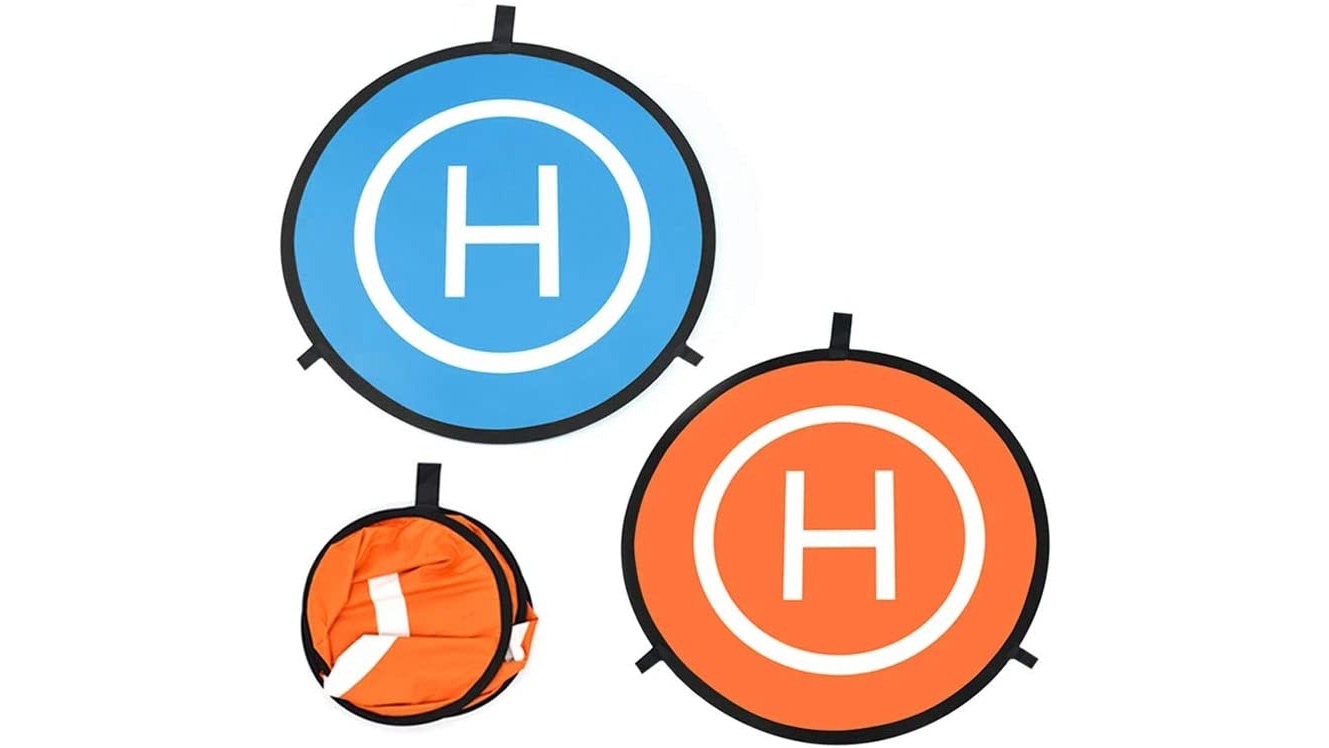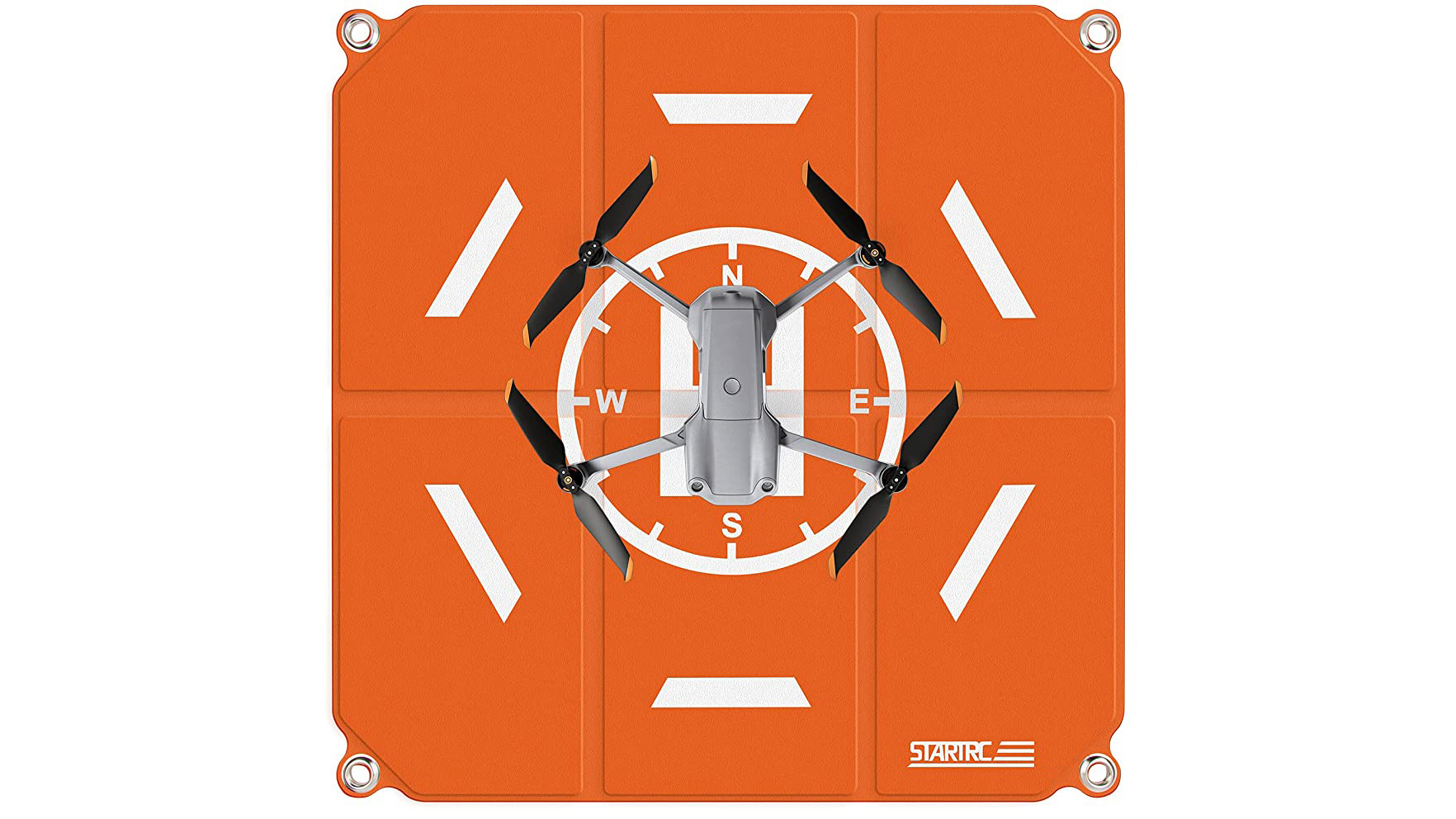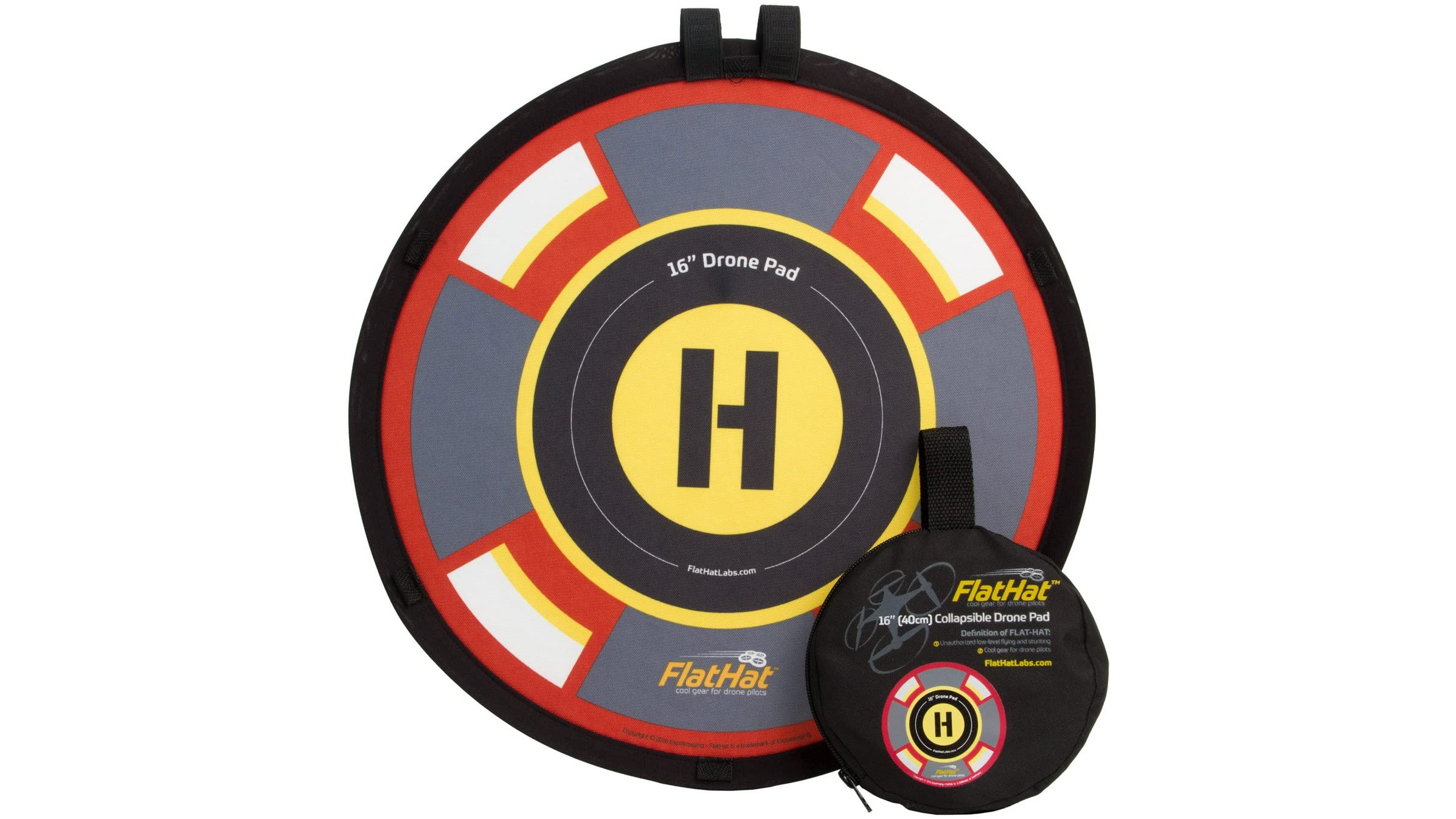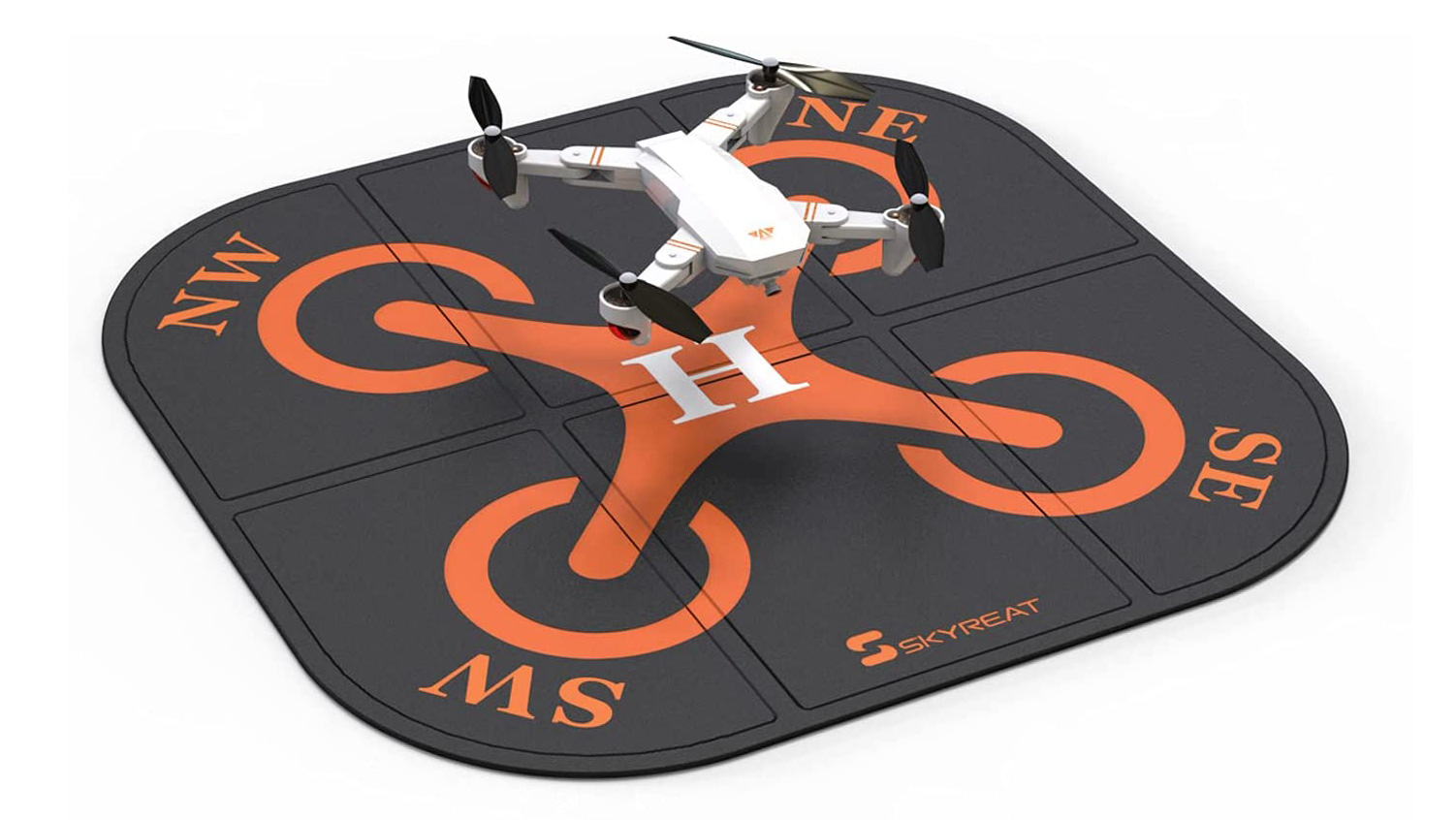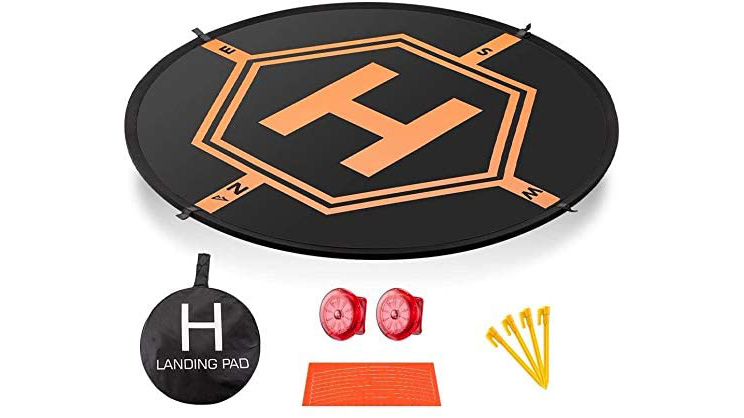Best drone landing pad
Keep your lens clean and ensure a safe take-off and landing with the best drone landing pads
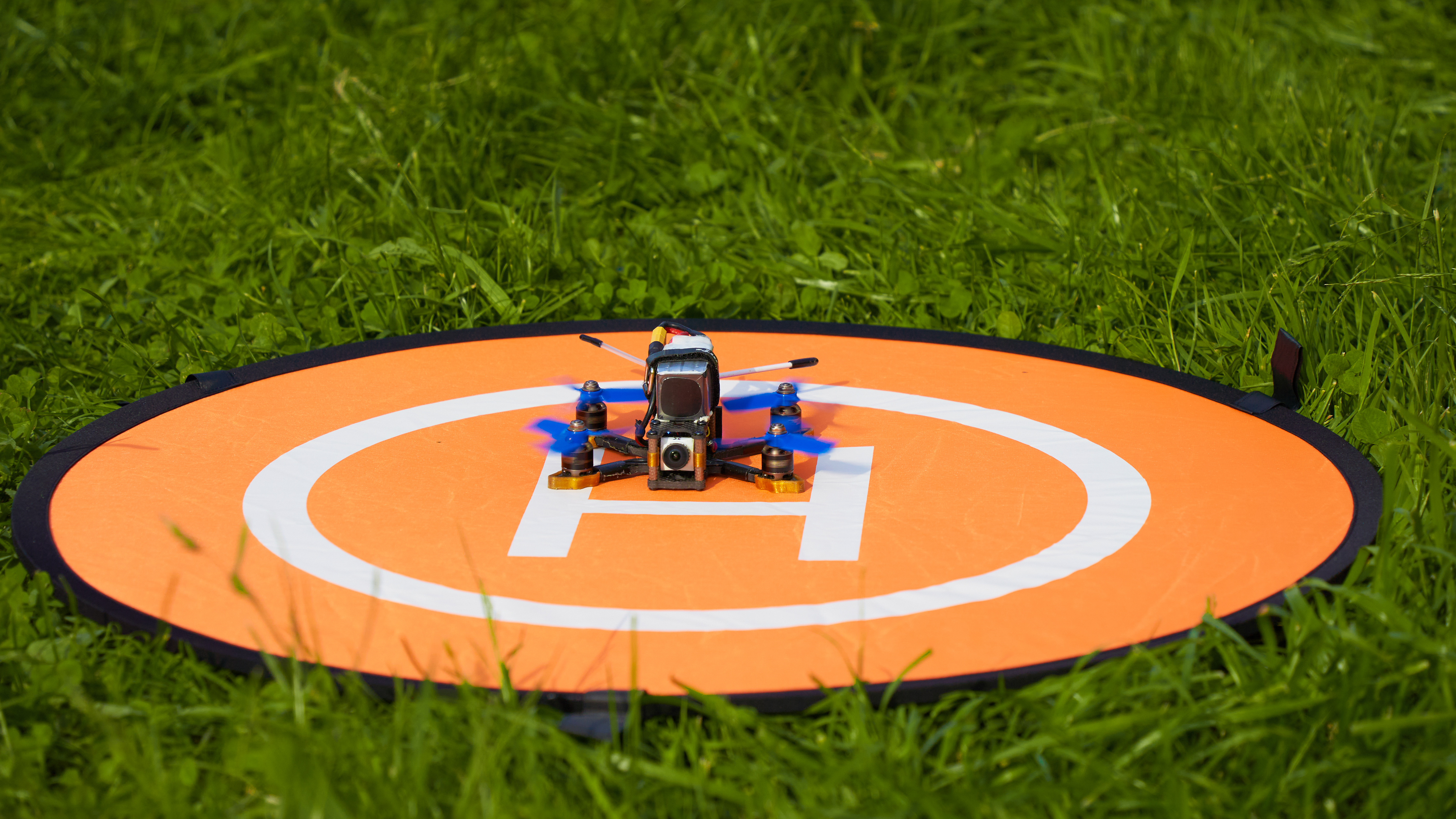
The best drone landing pads aren't just for show. Firstly, they're a good way to protect your drone's delicate components. And secondly, highlighting where you’re operating your drone to other people is actually quite important for safety.
After all, drones almost all have a built-in return-to-home, so it’s important that people (including yourself) know where that is!
Drone landing pads will likely end up saving you money by protecting the drone from all the detritus thrown up during take-off and landing. Even a little dust in the motors can cause significant harm, and even grass will harm propellors. Modern folding drones all have very short legs so, without a pad, short trimmed grass will likely reach the lens, too.
There is a trend for hand-launched drones, like the DJI Flip, but even these can benefit from pad launching since the flat ground will always keep the gyros perfectly stable.
There are two key types of pad, and I have both in the guide; key things to think about are portability and whether you'll be able to (or need to) use pegs to keep the landing mat in place (the hard folding type typically use their own weight, which is very convenient, but perhaps not practical for larger drones).
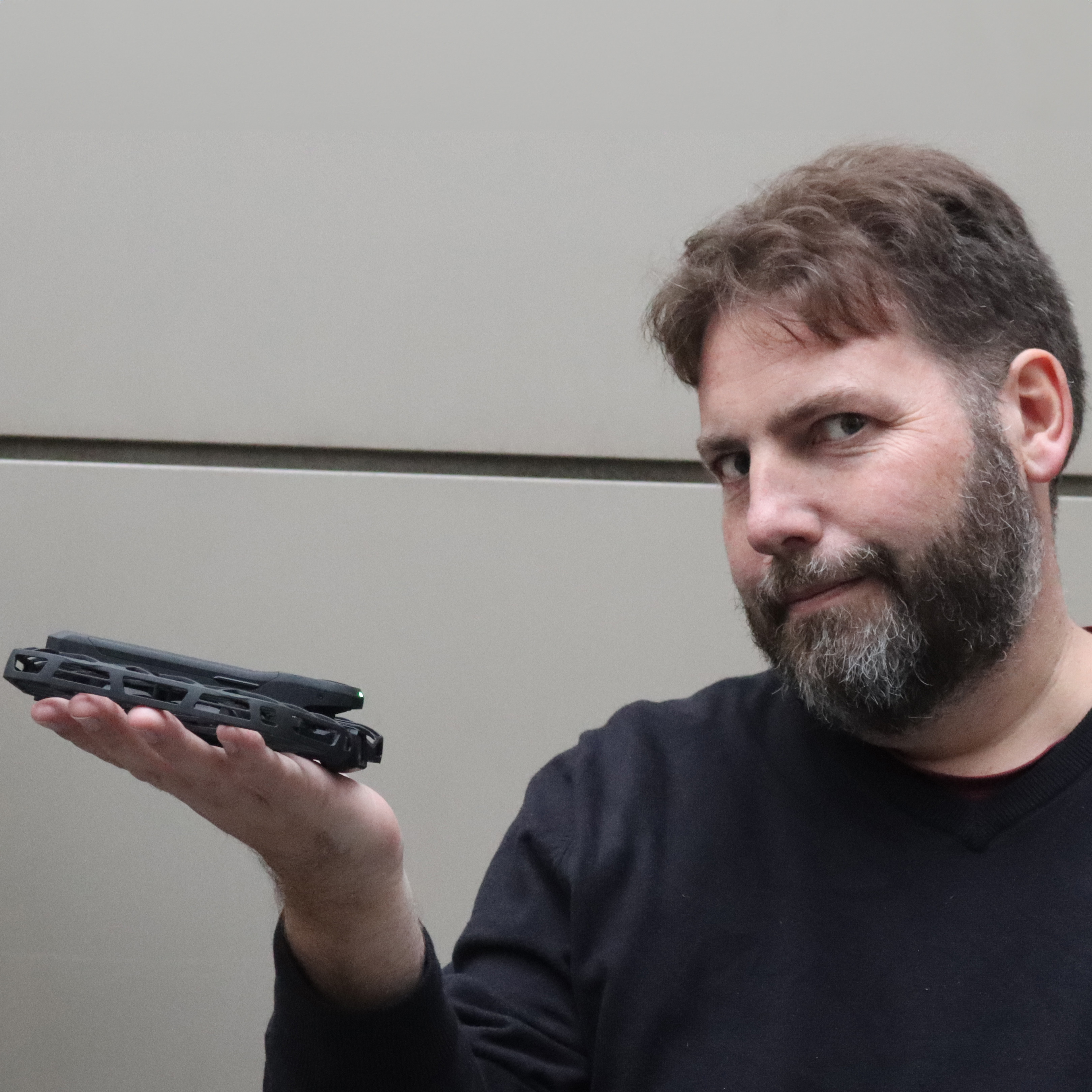
Adam has been writing about tech for over two decades and has been building and flying drones – as a hobby and professionally – for most of that time. He is not just DCW's resident expert on all aspects of camera drones, but the author of several books on the subject including bestsellers The Complete Guide to Drones and The Drone Pilot's Handbook.
The quick list
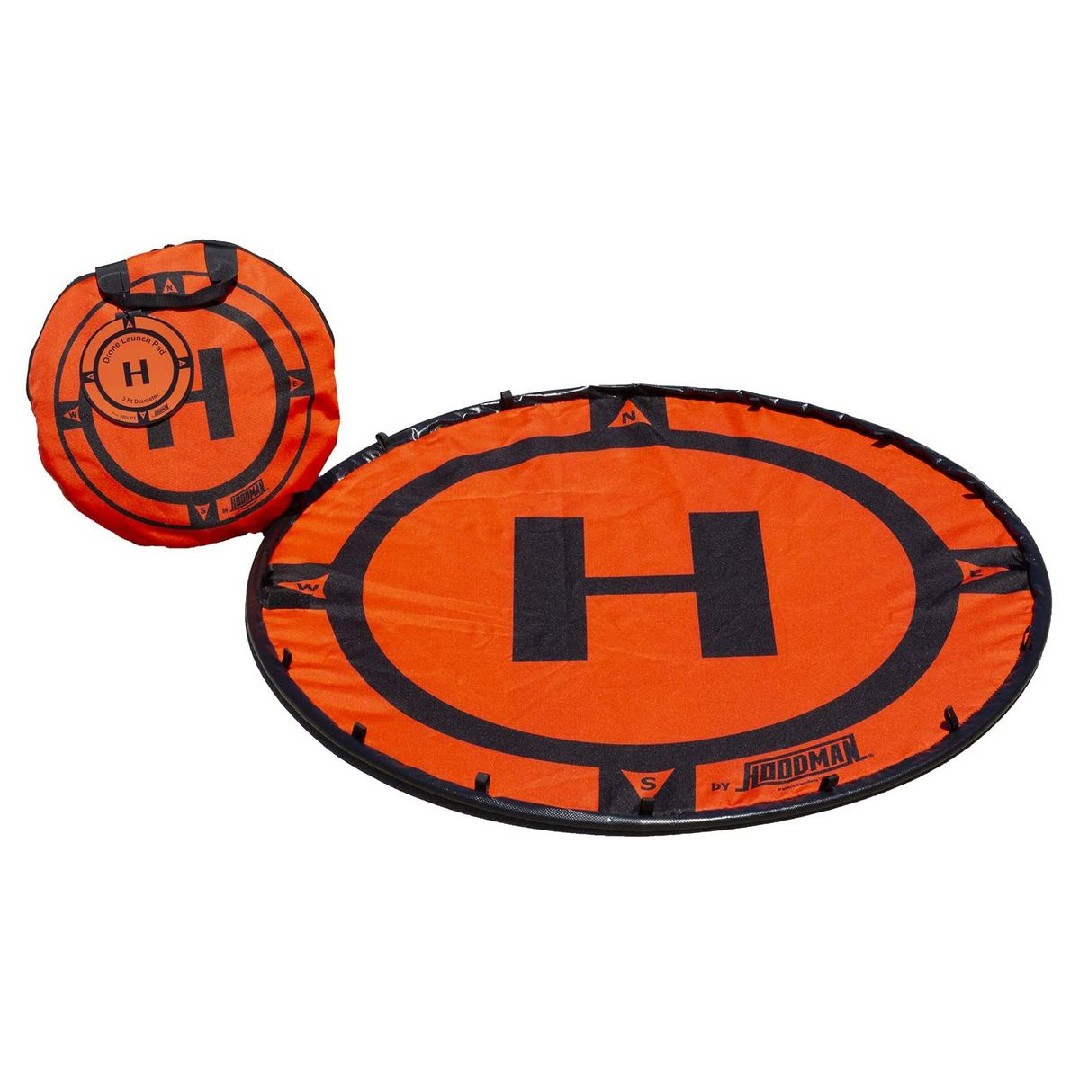
Best for pros
Our top choice for drone pros, this landing pad doesn't require pegs and comes in a handy carry case.
Read more below
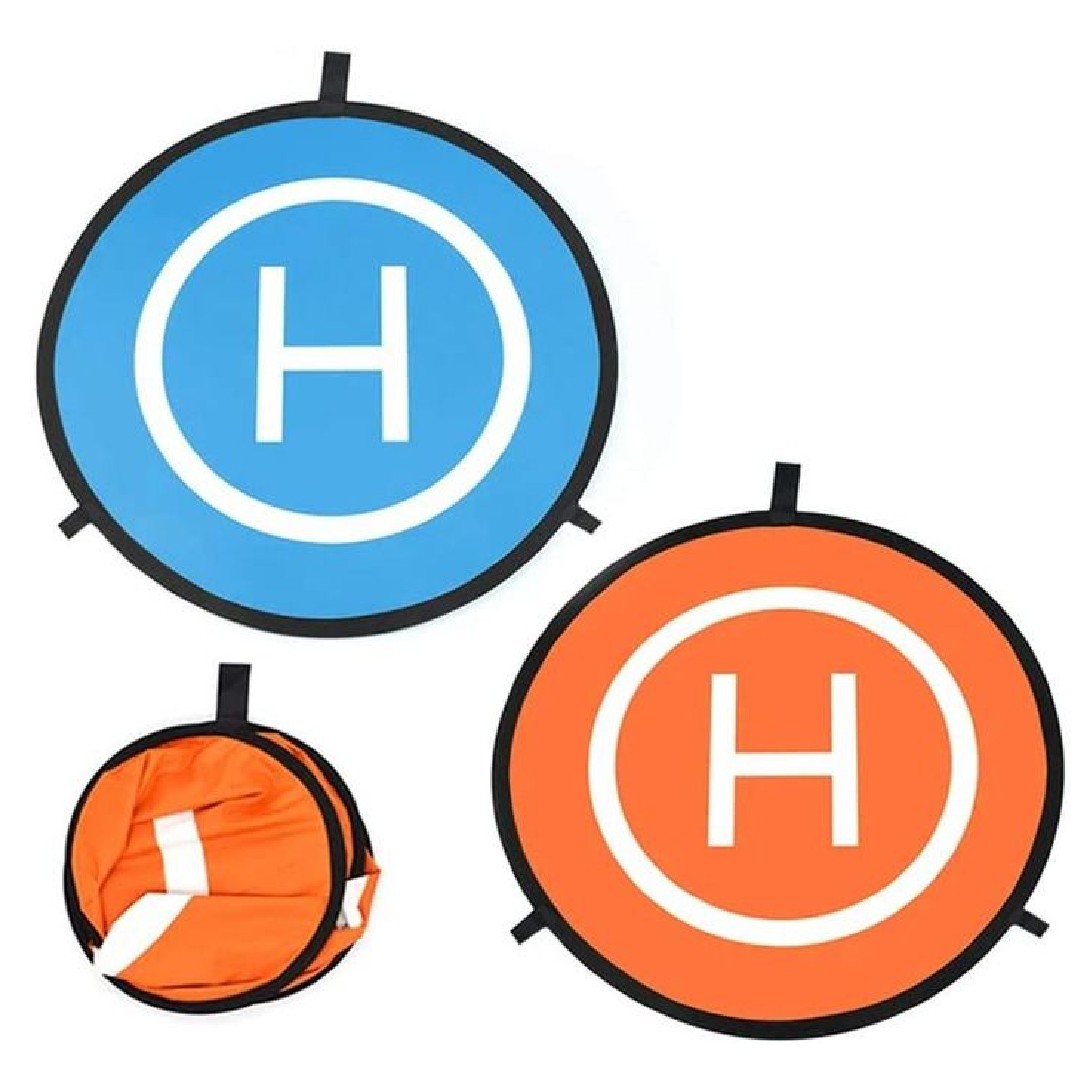
Best budget
This landing pad is nice and cheap, plus it's lightweight, so carrying it with your gear isn’t much of a chore.
Read more below
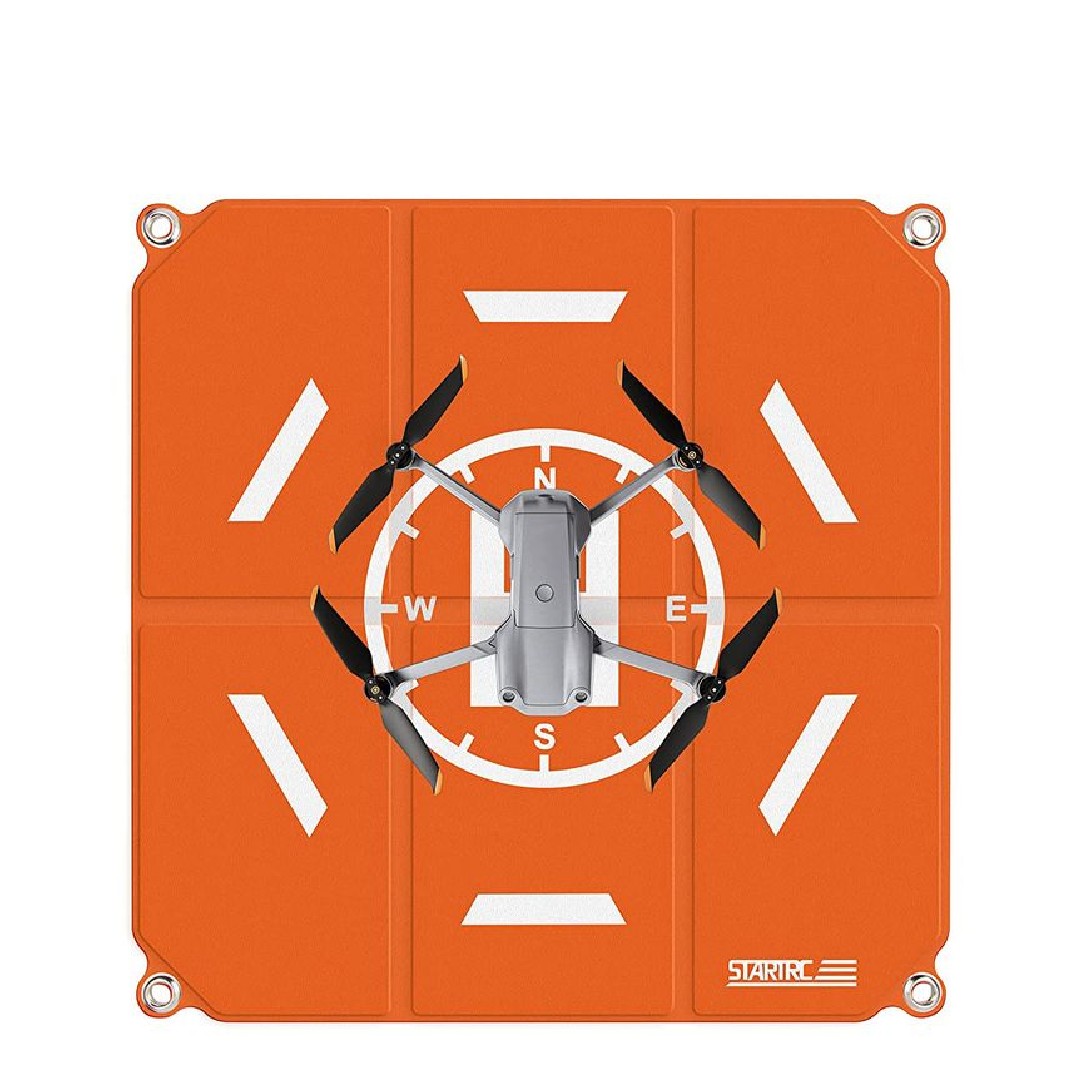
Easy to fold
This landing pad is easy to fold, plus it's weighted, so in low winds it can be placed on surfaces such as rocky ground.
Read more below
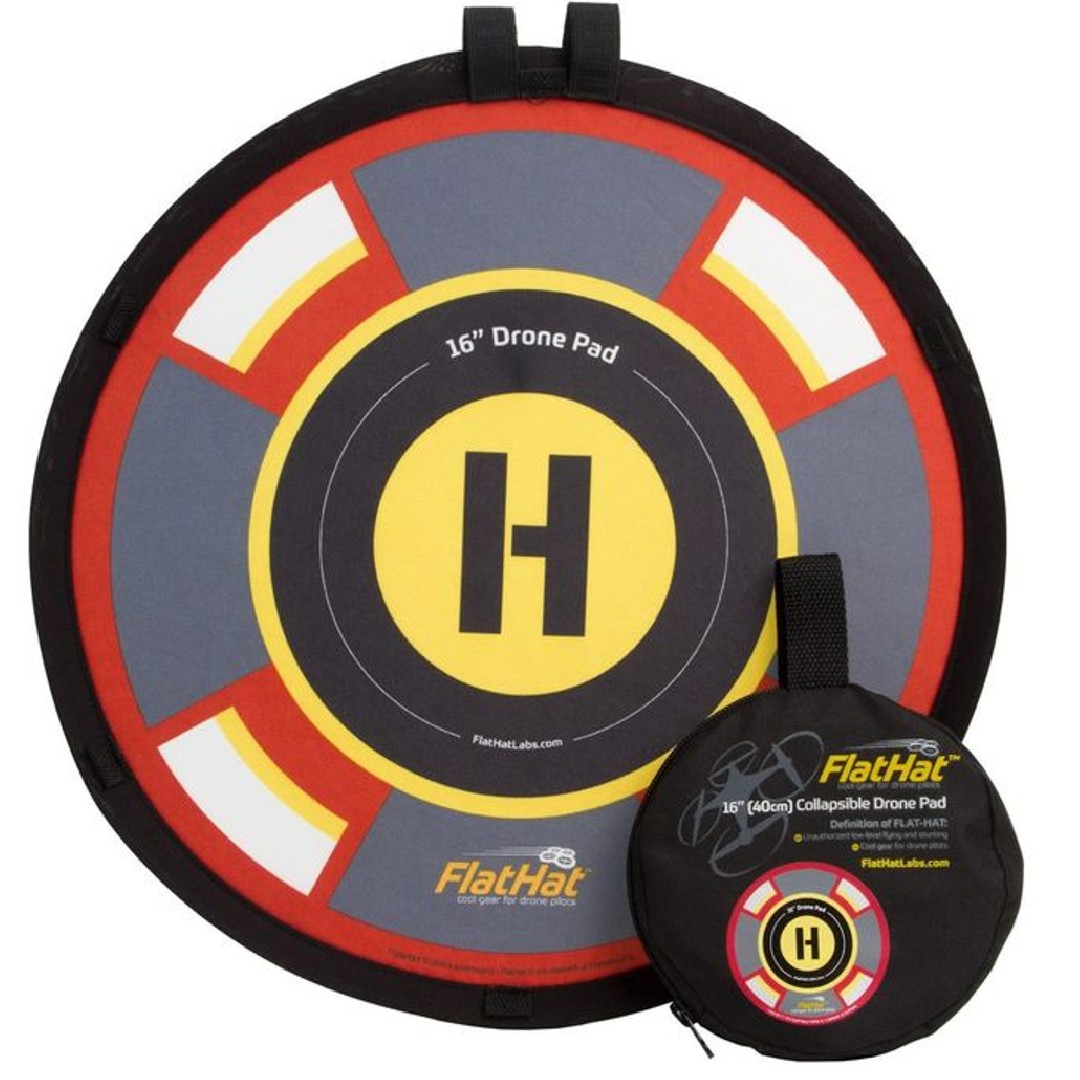
Best small
If you're looking for a small and unobstructive landing pad that's easy to carry, this 16-inch one is our top recommendation.
Read more below
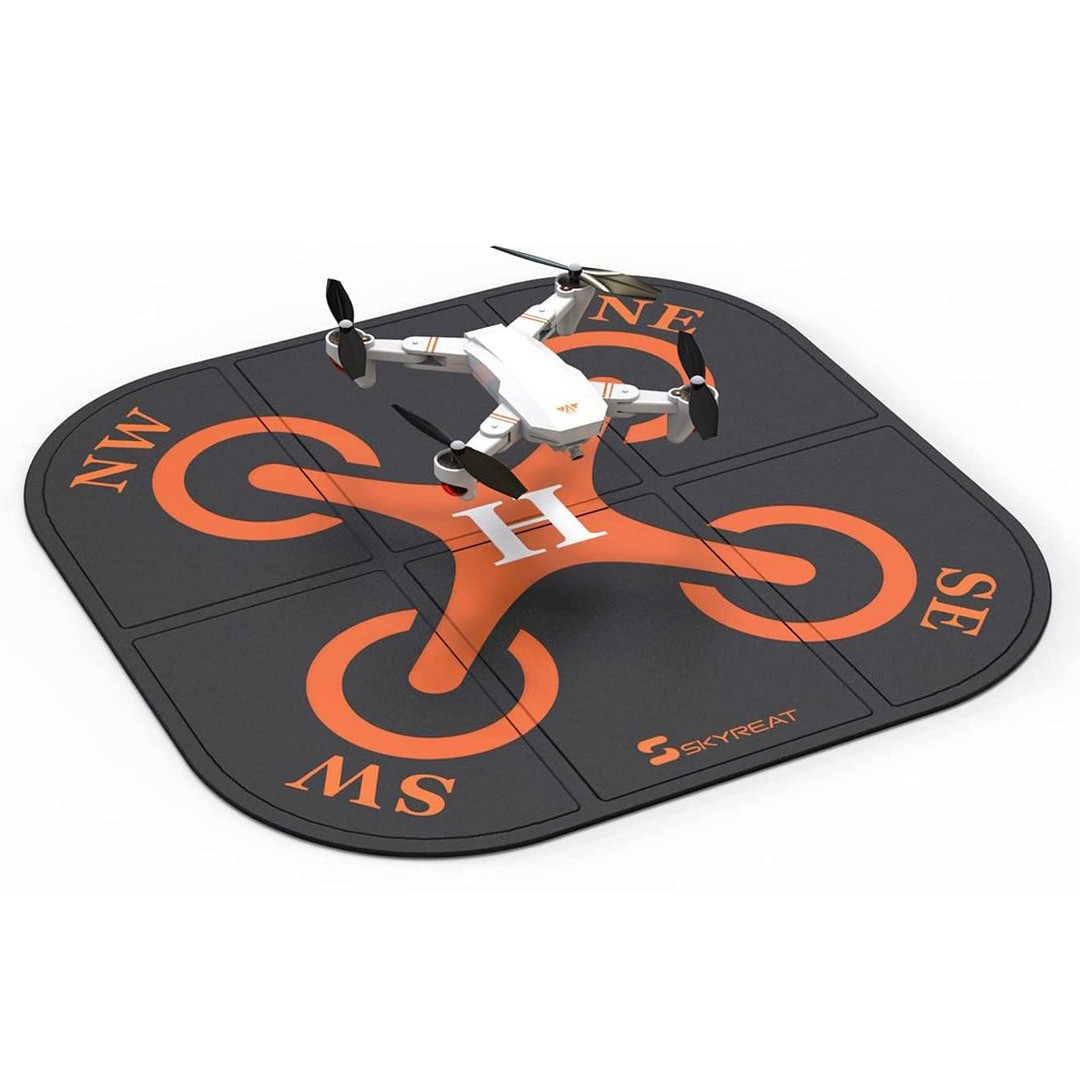
Alt small
This folding weighted plastic pad is another good option for smaller drones like the DJI Mavic Mini / Mini SE series.
Read more below
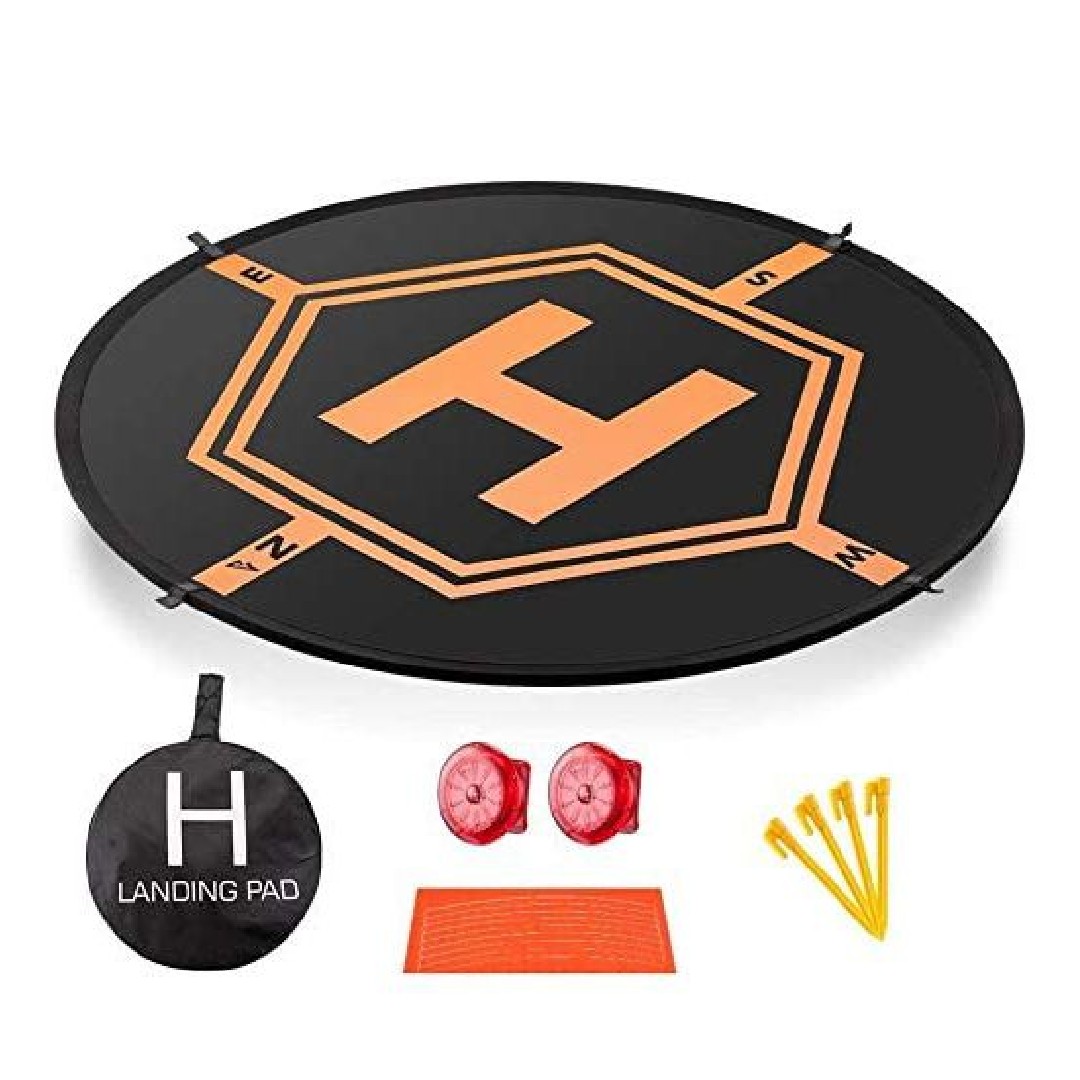
Best for night
What makes this stand out is that the LED lights designed to assist with night landing, along with reflective strips.
Read more below
Best drone landing pads
Why you can trust Digital Camera World
Best drone landing pad for pros
1. Hoodman HDLP3
Specifications
Reasons to buy
Reasons to avoid
This sprung loop pops up (and can be pushed back) in seconds, so setup is fast, while pegging it down is optional thanks to the weighted loop. We’d still recommend it, but it’s a great option to have, opening up the choice of taking off from surfaces (like rocks) a standard pop-out pad, which needs pegging down, simply isn’t going to allow.
We like Hoodman landing pads: they’re good quality products which go a little further than needed. There is a repeat of the ‘H’ design on the outside of the bag which could be stuck on a tripod as a warning sign (or even used as a tiny pad). Another sign of that care is the addition of more than the bare minimum three peg loops on the outer ring, so if you do peg down there are choices.
Best budget option
2. PGYTECH 75cm Landing Pad
Specifications
Reasons to buy
Reasons to avoid
Very reasonably priced, the PGYTECH isn’t quite a no-frills fold-out pad – it does have one surprise underneath: a second color. We all like a choice, from time to time, and you might find one is better suited to the environment or even your aircraft’s behaviour (though that seems less likely).
The fabric is simply nylon, keeping things very low weight, so carrying it with your gear isn’t much of a chore, though over time the stitching of the (slightly stingy) three loops for the pegs could be better and the sewing of the nylon to the zip on the bag could be better too. Nevertheless, this is a low-cost solution to the issues posed by grass or sand (anywhere you can peg).
Best drone landing pad for folding
3. STARTRC Drone Landing Pad, 65cm
Specifications
Reasons to buy
Reasons to avoid
While a lot of creatives and camping enthusiasts are well used to the pop-out principles of the circular pads, lighting reflectors and the like, there are some who find them a little confusing. If you count yourself among them, then a traditional fold is a much easier alternative, which can also have the virtue of fitting into a rectangular backpack.
This pad is weighted, so in low winds it can be placed on multiple surfaces – opening up rocky ground – while it also has the option of being pegged in place too. The simulated leather material is water resistant so easily cleaned, but we would have liked it to have a case to, even if it’s not a necessity – it won’t pop open like others on the list!
Best small drone landing pad
4. FlatHat 16-inch
Specifications
Reasons to buy
Reasons to avoid
You might wonder what a small landing pad is good for; there are several answers. You might make it the start-and-ending point of a competition with indoor drones, or release largely indoor drones on the world on a nice day.
Models like the Ryze Tello, which have optical flow sensors, will definitely appreciate this pad’s contrasty design. 40cm is also a good size for the popular DJI Mini 2 SE and Mini 3 Pro which definitely benefit from camera protection at take-off. The size and weight of the pad, especially packed, is definitely not going to be a problem, and if you can’t visualize it, the diameter is roughly the same as the length of a ‘real’ computer keyboard with numeric keypad.
Cautious flyers might even get airborne with a drone the size of an DJI Air 2S from here, though you’d only be protecting the camera, not the propellors.
Another good small option
5. Skyreet 50cm Landing Pad
Specifications
Reasons to buy
Reasons to avoid
A smaller variant of the concept seen in the STARTRC above, this folding weighted plastic pad is ideally suited to smaller drones like the DJI Mavic Mini / Mini SE series, aircraft so small they’re notoriously difficult to find a safe spot to take off with. The pad’s size means it can be rested on a rocky beach and keep enough flatness to be used and the central white H in the design is a nice touch as it adds contrast for the drone’s sensor as it gets close.
The lack of peg holes means this will only be useful if you’re not expecting it to blow away. A DJI Mini won’t flip it over and they don’t enjoy very windy days either, so that’s probably OK, but it would have been nice to have the choice.
Best for night landing
6. AURTEC Drone Landing Pad
Specifications
Reasons to buy
Reasons to avoid
The Aurtec is a similar product to the usually cheaper PGYTECH, a pop-out circle, and indeed you’ll find others manufactured by unknown brands. What makes this stand out is that it ships with LED lights designed to assist with night landing, assuming you have permission for night operations with your aviation authority.
It also ships with reflective strips, though we’ve not been able to find much of a use for them – they might even confuse some drones as they land. We’re also surprised that the LEDs weren’t green – the color less likely to affect your night vision which you’ll see used on real helipads.
How to choose the best drone folding pad
The best landing pads are lightweight and feature a high contrast design. The design should be easy for a drone’s optical-flow sensors to read so landing is smooth. These kick in when near landing and help the drone make smaller, more accurate hovering movements than GPS can. That means high contrast is good. An ‘H’ is actually a fine choice, which has the benefit of making sense to untrained passer-by.
Securing the pad to the ground is important too; the drone produces a decent downdraft (most at take-off and landing), so ensure you’re confident in how the pad’s secured. Usually tent pegs make a good choice. Finally, don’t forget size matters. After years of drones getting smaller, it’d be a shame to have to carry a pad you couldn’t fit in your backpack.
FAQs
What is a drone landing pad?
A drone landing pad is a designated area specifically designed for drones to take off and land safely. It provides a clear, flat surface that is easy for the drone's sensors to detect and helps protect the drone from damage during landing.
Why should I buy a drone landing pad?
Using a landing pad can help extend the life of your drone by providing a smooth, stable surface for landing. It also helps prevent debris or objects from getting caught in the drone's rotors during takeoff and landing. Some drone models require the use of a suitable landing pad for optimal performance and safety.
What are drone landing pads made of?
Common materials use to manufacturer drone landing pads include PVC, polypropylene, aluminum, and durable woven fabrics. Some pads also feature a rubberized or gripped surface to prevent slipping.
How we test the best drone folding pads
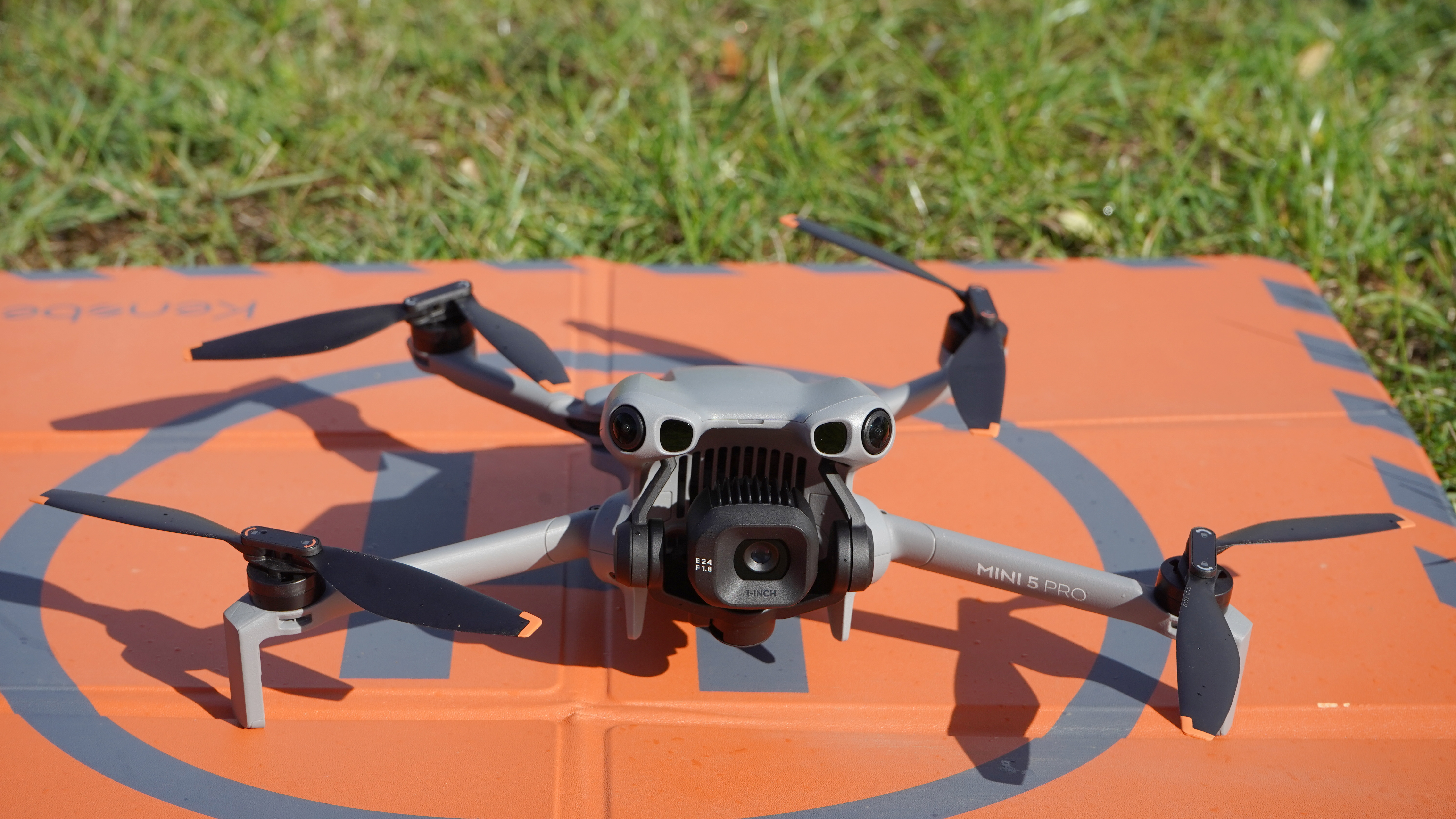
We give drone folding pads a rigorous assessment to ensure they deliver quality and reliability to consumers. That means paying attention to materials and durability. It means assessing how well they work with a variety of drone models in practice. And we also look at stability during takeoff and landing, as well as ease of transportation.
Read more
• The best drone accessories
• The best drones for aerial photography
• Best FPV drones
Best for night landing
The best camera deals, reviews, product advice, and unmissable photography news, direct to your inbox!

With over 20 years of expertise as a tech journalist, Adam brings a wealth of knowledge across a vast number of product categories, including timelapse cameras, home security cameras, NVR cameras, photography books, webcams, 3D printers and 3D scanners, borescopes, radar detectors… and, above all, drones.
Adam is our resident expert on all aspects of camera drones and drone photography, from buying guides on the best choices for aerial photographers of all ability levels to the latest rules and regulations on piloting drones.
He is the author of a number of books including The Complete Guide to Drones, The Smart Smart Home Handbook, 101 Tips for DSLR Video and The Drone Pilot's Handbook.
